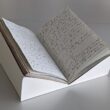Home University of Edinburgh Library Essentials
January 2, 2026
IIIF is live!
Posted on December 22, 2016 | in Development, Digital Communities, Library & University Collections, Uncategorized | by Scott RentonThis week, and just scraping in before the end of the year, we upgraded the LUNA imaging platform to version 7.2. This is important to us for two reasons: the first is aesthetic, as the front-end interface has been completely overhauled and is much cleaner, more responsive and (basically) more modern; the second is that its implementation means we are now a IIIF-compliant institution. As always, the site can be found at http://images.is.ed.ac.uk.
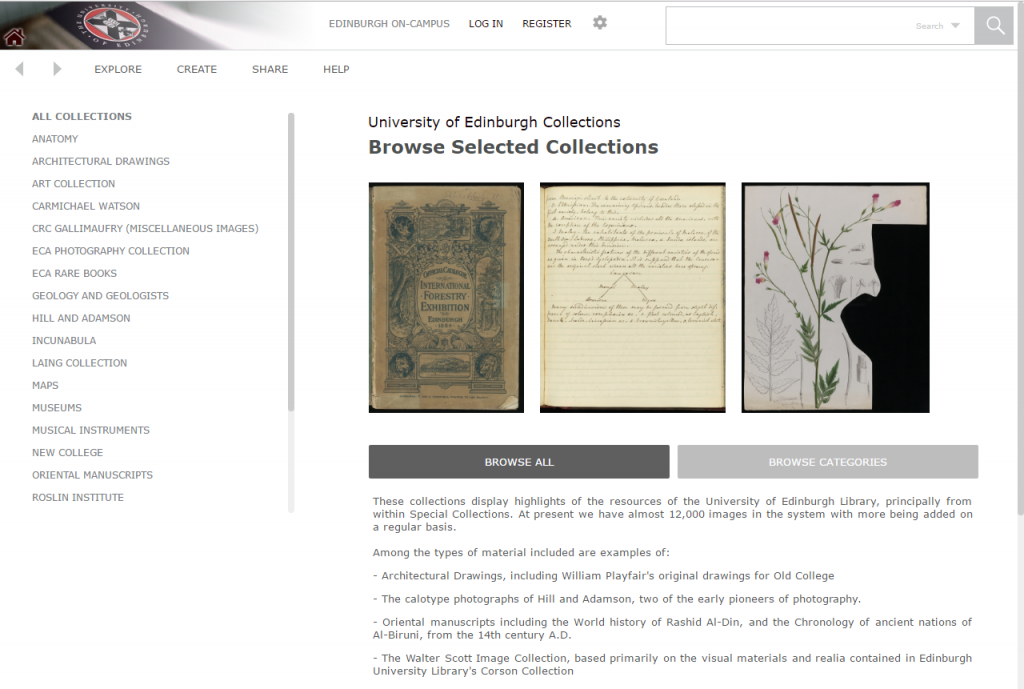
What is IIIF?
There have been a few blogposts about IIIF this year, but they’ve been prospective and theoretical; now, we can talk about it as something we can genuinely offer. IIIF- the International Imaging Interoperability Framework- is a toolkit which allows open exchange with images, meaning that an image need only be hosted once for it to be disseminated anywhere. Yes, since the birth of the internet, we’ve been able to pull images into webpages using http links, but IIIF takes this to another level: its parameter driven URIs allow formatting to take place on the image without downloading it, taking it into (e.g) Photoshop and working on it there. A range of image viewers are IIIF-compliant, and these allow high-resolution zooming directly onto a webpage, or the performance of comparisons with other institutions’ content.
Since the Image API, which addresses the above, was written, new layers of IIIF have appeared:
- The Presentation API gives a shorthand which determines sequencing and display of selections of images, and lends itself well to comparisons. It includes Open Annotation extensions to allows users to, well, annotate images. The information that they add is stored in such a way that it can be discussed and rated by other users.
- The Authentication API gives users control over how items are accessed- not everything is able to be completely open.
- The Search API allows deeper search into the facets of the surfaced images.
How will we use it?
With LUNA as our IIIF server, we expect to be able to streamline a lot of our collections content. For example:
- collections.ed.ac.uk sites. Where we have a high-res image, we need an extra click to LUNA to see the full image. Using an embedded viewer such as OpenSeadragon or Leaflet, we will be able to zoom and pan the image directly on the page. This means we can effectively retire the LUNA front-end for these collections (and don’t need to worry about metadata getting out of sync!). This screenshot from the Art collection on test shows we’re working towards making this happen.
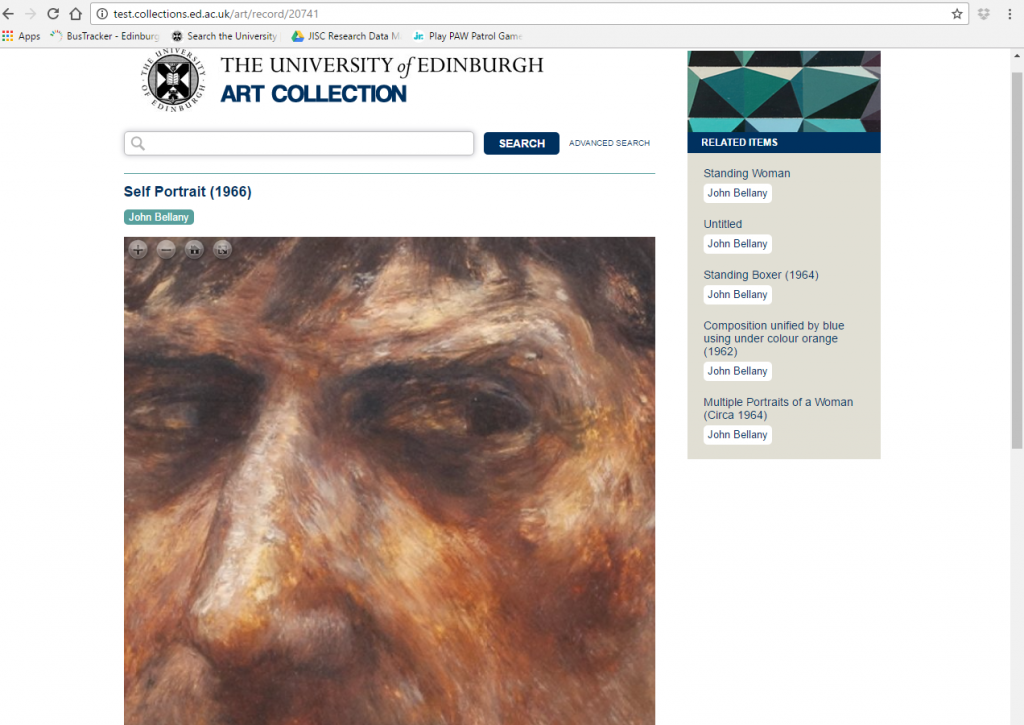
- Vernon/metadata games/anything that needs jpegs. These systems can reference URIs rather than storing images directly on the filesystem. This will save a lot of disk space and a lot of donkey work moving things around.
- Scottish Session Papers. This project is a collaboration among three institutions, and we intend to use the Mirador viewer as a front end to allow comparison across the content and to view the papers holistically.
- Polyanno. This amazing transcription and translation tool was developed in the summer by intern Erin Nolan, and will be available in the new year. It makes really good use of the Open Annotation extensions.
Try it!
This is a bit technical, but it’s verging on fun once you get your head round it.
Pick an item in LUNA and copy the URL (obviously we do all of this programmatically!), for example:
http://images.is.ed.ac.uk/luna/servlet/detail/UoEwmm~3~3~61321~166317:Photograph-Album-%E2%80%9CChina%E2%80%9D,-f-57r,-de
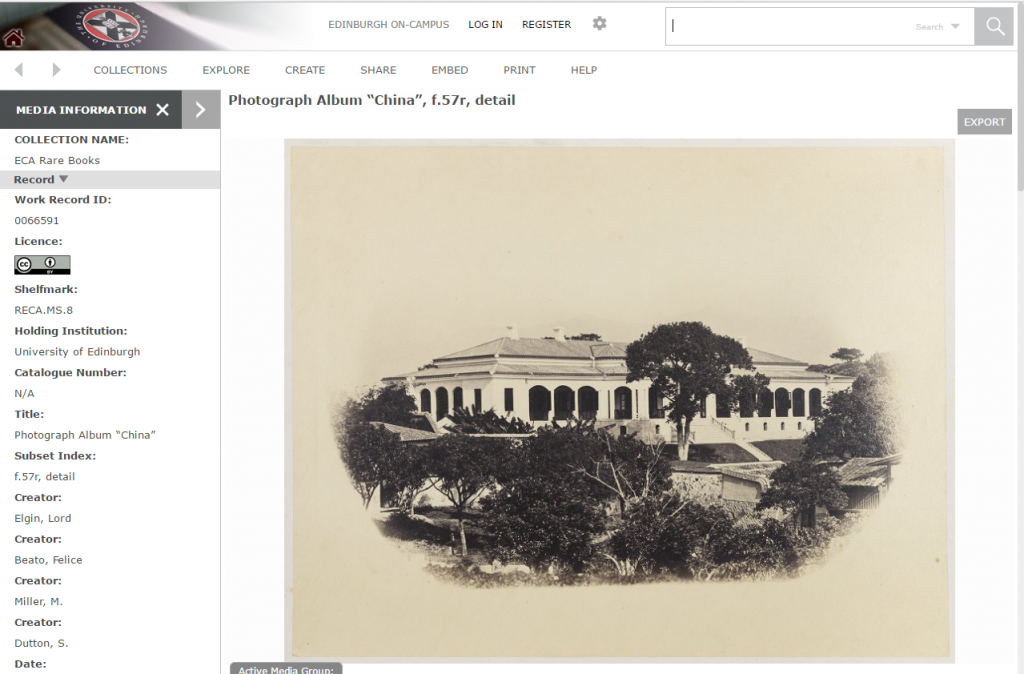
…cut off the trailing text…
http://images.is.ed.ac.uk/luna/servlet/detail/UoEwmm~3~3~61321~166317
…replace ‘detail’ with ‘iiif’..
http://images.is.ed.ac.uk/luna/servlet/iiif/UoEwmm~3~3~61321~166317
…then add the parameter “path”, to get a working vanilla IIIF URL:
http://images.is.ed.ac.uk/luna/servlet/iiif/UoEwmm~3~3~61321~166317/full/full/0/default.jpg

Now you can start formatting. Some of the things you can do follow, but you can see the full spec here.
- Crop it (parameter 1):
http://images.is.ed.ac.uk/luna/servlet/iiif/UoEwmm~3~3~61321~166317/1400,2000,600,600/full/0/default.jpg

- Resize it (parameter 2):
http://images.is.ed.ac.uk/luna/servlet/iiif/UoEwmm~3~3~61321~166317/full/500,500/0/default.jpg
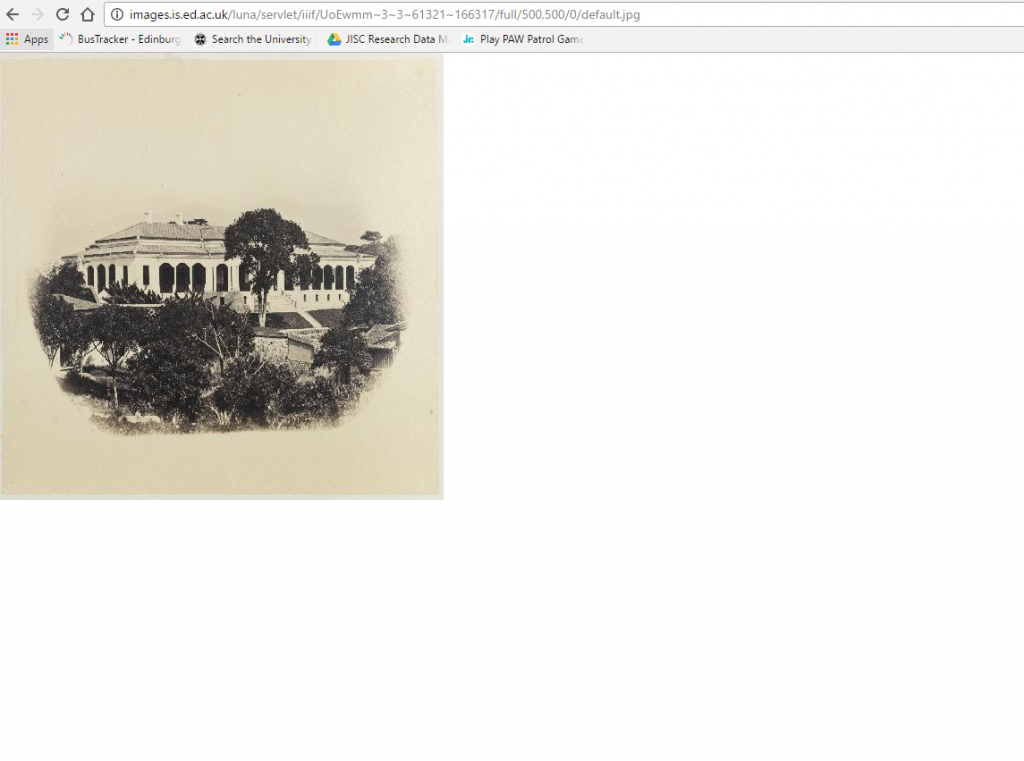
- Rotate it (parameter 3):
http://images.is.ed.ac.uk/luna/servlet/iiif/UoEwmm~3~3~61321~166317/full/full/225/default.jpg
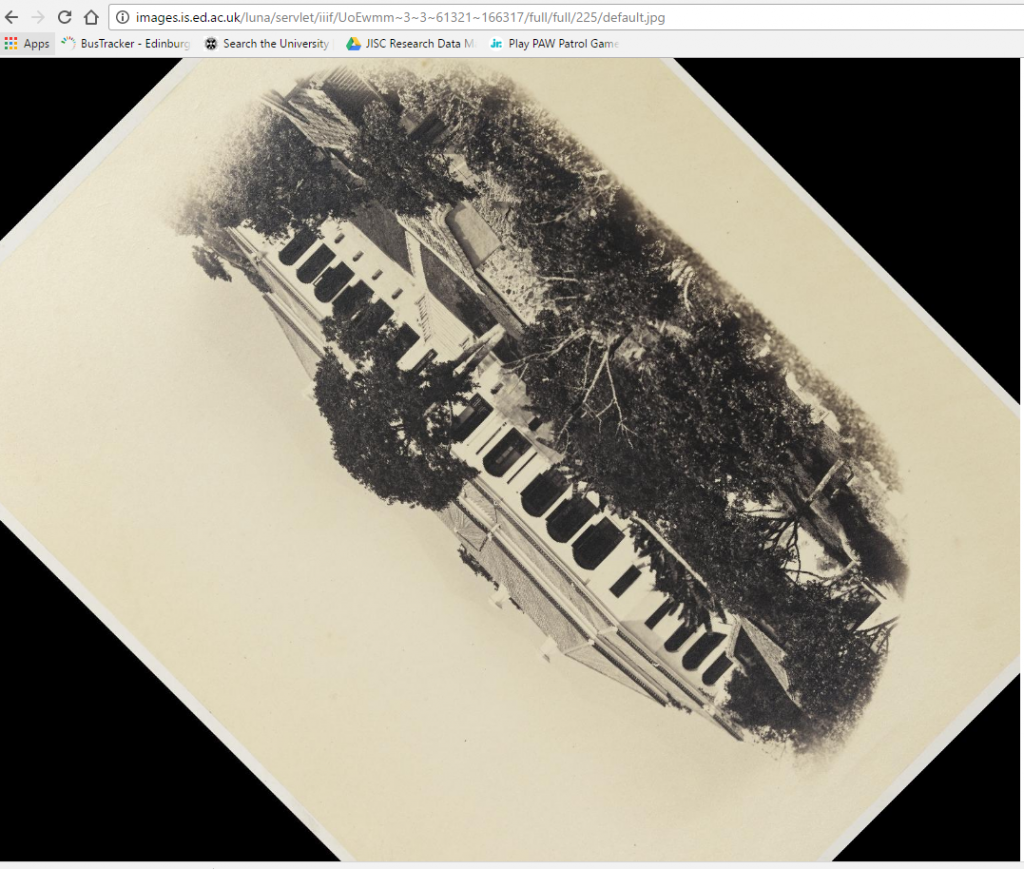
I hope this sheds a bit of light on what we’re now able to do. We will try to keep everyone informed as IIIF developments happen over the coming year.
Scott Renton, Digital Development
Collections
 Hill and Adamson Collection: an insight into Edinburgh’s past
My name is Phoebe Kirkland, I am an MSc East Asian Studies student, and for...
Hill and Adamson Collection: an insight into Edinburgh’s past
My name is Phoebe Kirkland, I am an MSc East Asian Studies student, and for...
 Cataloguing the private papers of Archibald Hunter Campbell: A Journey Through Correspondence
My name is Pauline Vincent, I am a student in my last year of a...
Cataloguing the private papers of Archibald Hunter Campbell: A Journey Through Correspondence
My name is Pauline Vincent, I am a student in my last year of a...
Projects
 Cataloguing the private papers of Archibald Hunter Campbell: A Journey Through Correspondence
My name is Pauline Vincent, I am a student in my last year of a...
Cataloguing the private papers of Archibald Hunter Campbell: A Journey Through Correspondence
My name is Pauline Vincent, I am a student in my last year of a...
 Archival Provenance Research Project: Lishan’s Experience
Presentation My name is Lishan Zou, I am a fourth year History and Politics student....
Archival Provenance Research Project: Lishan’s Experience
Presentation My name is Lishan Zou, I am a fourth year History and Politics student....


